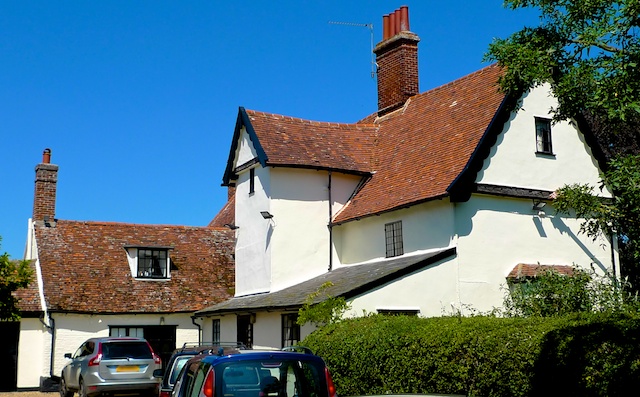Pictures of buildings mentioned in the second edition “Suffolk” volume of “The Buildings of England” series by Sir Nikolaus Pevsner.
In his ‘perambulation’ of Stowmarket on page 445 of the second edition, Pevsner says “The church lies just behind the Market Place. Off the Market Place to the N is the main street-crossing of Stowmarket. Station Road runs along the N side of the churchyard and ends at the station, an elaborate piece of Elizabethan architecture by Frederick J Barnes, 1849. Red and yellow brick, symmetrical, with shaped gables and angle towers.” Seen here:
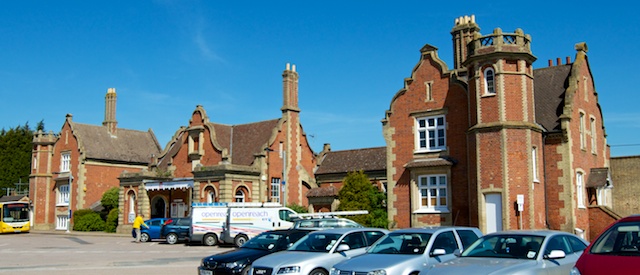
“On the way one passes Lynton House, the Stowmarket house of the Tyrell family of Gipping. Early Georgian, of five bays and two and a half storeys, the half storey being above the cornice. Yellow brick, with red brick dressings and red vertical lacing of the windows. Pedimented doorway with Tuscan pilasters.”:
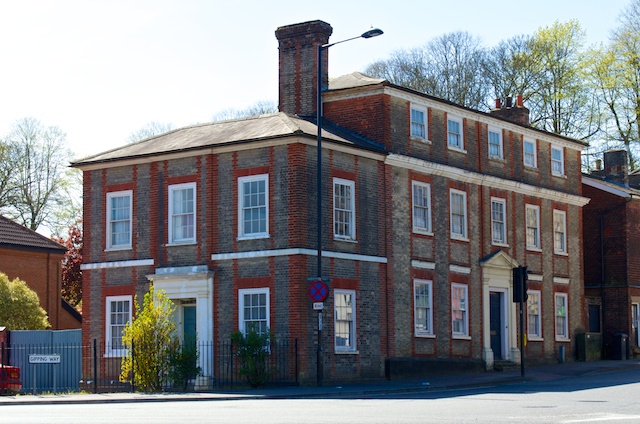
“From the main crossing N runs Bury Street, winding with nice houses here and there but nothing special. From the same place W in Tavern Street No 15, C17 but altered in 1770. Five bays, two storeys. Pedimented doorway with Tuscan pilasters.”:
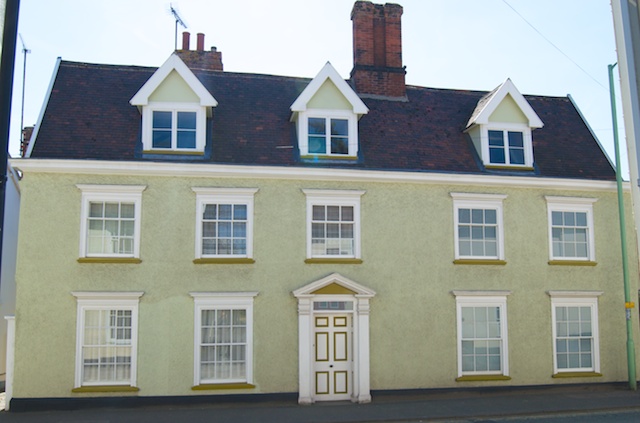
“Off Tavern Street in Finborough Road the Vicarage”. I have yet to find this one and it may no longer exist: there is nothing in Finborough Road in the Listed Buildings register.
“In the Market Place the most noteworthy house is No 14, late-Georgian, of three bays and three storeys with a middle pediment, a window below flanked by pilasters, and a handsome shop-front with Roman Doric columns.”:
“In the Market Place the most noteworthy house is No 14, late-Georgian, of three bays and three storeys with a middle pediment, a window below flanked by pilasters, and a handsome shop-front with Roman Doric columns.”:
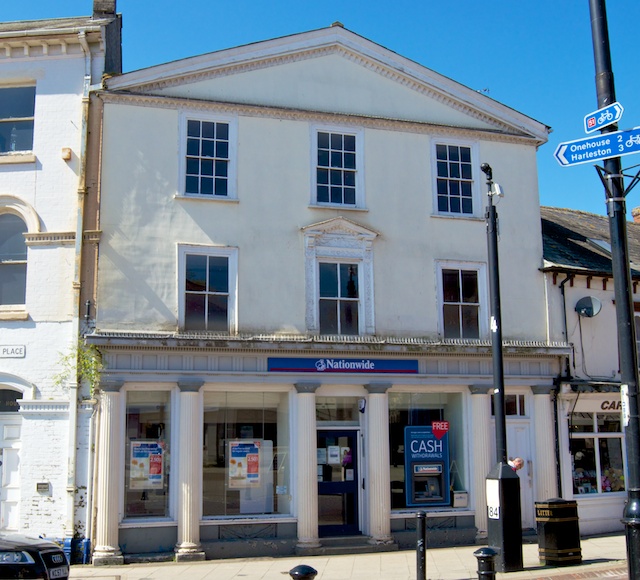
“Off the Market Place down the short Crow Street and to Abbot’s Hall which is really outside the town. The house is of the early C18, red brick, five bays, two storeys, with a hipped roof and five dormers. Porch with doorway crowned by an open segmental pediment. The house lies in a large garden. It stands in the place of the Stowmarket grange of the abbots of St Osyth.”:
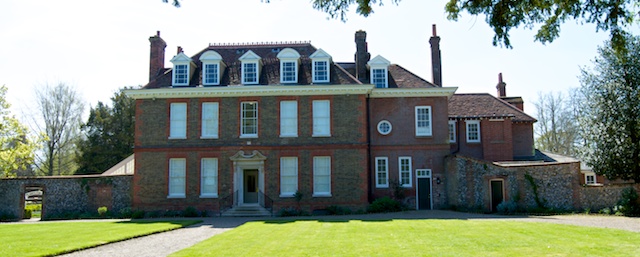
“A late medieval barn, formerly 160ft long, now forms part of the Rural life Museum. On an island in the lake, perhaps formerly a fishpond, is a square red-brick summer house.”
“From the Market Place SE Ipswich Street. Here the King’s Head Hotel, with a Georgian doorway (Roman Doric columns) ... has been replaced with Lipton’s supermarket. At the end of Strickland Road to the r., and again outside the town The Stricklands.”:
“From the Market Place SE Ipswich Street. Here the King’s Head Hotel, with a Georgian doorway (Roman Doric columns) ... has been replaced with Lipton’s supermarket. At the end of Strickland Road to the r., and again outside the town The Stricklands.”:
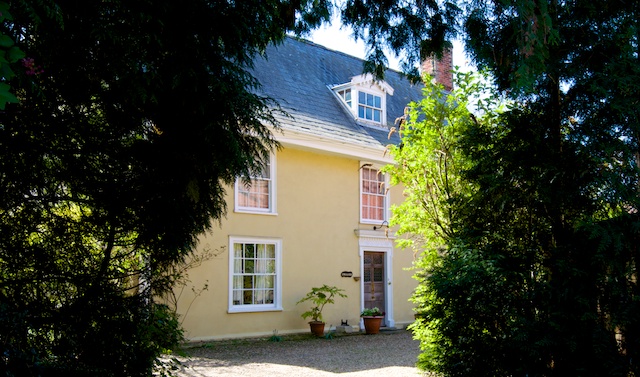
“The continuation of Ipswich Street is Ipswich Road. No 27 has a plastered five-bay front of 1702., with a later Tuscan porch.”
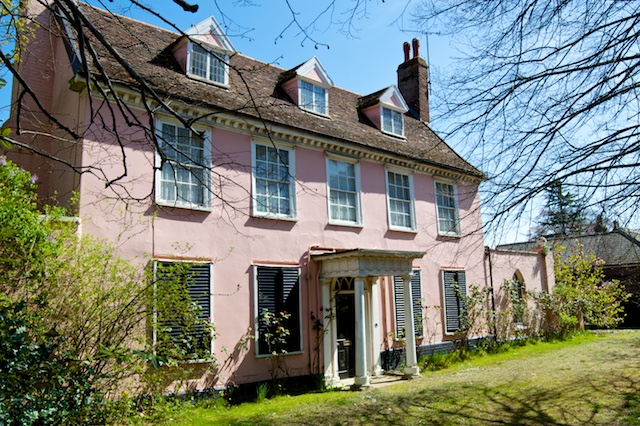
“Yet further out, on the Needham Road, 1m SE of the church is The Cedars. Early C18 front of three widely spaced bays with a jolly doorway. Fluted Corinthian pilasters and an open scrolly pediment”. The Cedars is, I think, now a hotel with recent buildings surrounding the original such that the features cannot easily be seen.
Pevsner concludes “In Combs Lane, 3/4 mile SW is Valley Farm, a timber-framed Elizabethan house with a porch not placed symmetrically. It has open balustraded sides and a carved bressumer above.” I think the picture below is it, but the features cannot be seen on this public accessible side:
Pevsner concludes “In Combs Lane, 3/4 mile SW is Valley Farm, a timber-framed Elizabethan house with a porch not placed symmetrically. It has open balustraded sides and a carved bressumer above.” I think the picture below is it, but the features cannot be seen on this public accessible side:
